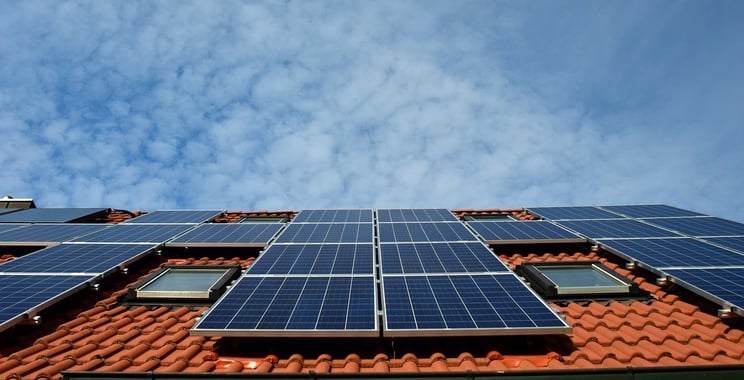The solar PV industry has faced a year of change in 2019, with more uncertainty lying ahead. First came the end of the Feed-in Tariff, the guaranteed payments for people generating solar energy. The 50% deemed Export Tariff for smaller systems ended at the same time and we’re still waiting to see what will fill the gap, to prevent customers with new solar systems from exporting excess electricity to the grid for free. (Don’t worry, this doesn’t impact people who installed their system before the final Feed-in Tariff deadline of 31st March 2019.) The current proposal from the government is the Smart Export Guarantee (SEG) - more on this below. As a final kick in the teeth to the industry, another threat to solar PV installation has resurfaced - a potential solar VAT rise on domestic systems from 5% to 20%.
So what does all this mean to you? Is solar PV still worth installing now, either as an extension to your existing system, or as a new system altogether, or should you wait? And what about a solar battery?
What is the Smart Export Guarantee?
The government announced plans for the SEG as a replacement for the Export Tariff at the start of the year. In a nutshell:
- Customers with new renewable energy systems installed are guaranteed payments for excess electricity they export to the grid by larger suppliers (companies with more than 250k customers).
- The price for this will be more than zero.
- The price could vary depending on time and demand.
- Smart meters will likely be used to measure electricity export.
This guarantee is still under discussion, with a second consultation started at the end of April. If approved, it’s been reported that the government aims to start the legislative process before summer recess with a final deadline for the introduction of the SEG being the end of the year. (That of course assumes we have a government in a position to legislate…)
Government or no government, it seems an awfully long time to wait for customers who are potentially giving away their excess solar energy for free. Fortunately, some companies are jumping ahead of the legislation and offering their own payback opportunities.
Current PV export tariffs
E.ON was first out of the gate with their Solar Reward scheme. This aims to bridge the gap between the end of FiTs and the start of the SEG. The first 500 new solar customers who apply will be paid 5.24p per kWh, for one year after install, on the assumption that 50% of their generated electricity is sent to the grid.
Renewable supplier Octopus Energy is claiming the UK’s ‘first smart export tariff’. Octopus is offering solar-generating customers a couple of options for reimbursing exported electricity:
- Outgoing Fixed - 5.5p per kWh (which is higher than previous FiT payments);
- Outgoing Agile - half-hourly prices that match day-ahead wholesale rates (savvy customers can pair this with battery storage to maximise returns).
To qualify, you need to be an Octopus customer, have a smart meter with half-hourly data and to have not started receiving FiTs within the last 12 months.
Small renewable company Bulb is also running a 50 customer trial of export payments.
Proposed solar VAT rise
HMRC has once again proposed raising the rate of VAT on non-labour costs of energy saving materials (including residential solar and battery storage) from 5% to 20%. This would impact domestic solar as well as battery storage systems installed alongside domestic solar. Currently battery storage benefits from 5% VAT only when it is installed alongside new solar (or an extension to a solar system).
This draft legislation was proposed on 8th April 2019. If implemented, it will take effect on 1st October 2019.
The proposed rise has some exemptions:
- residents over 60 or receiving certain benefits;
- buildings with solely vulnerable residents;
- housing associations, care homes, halls of residence;
- systems in which components make up less than 60% of installation costs (if they do then 5% VAT only applies to the labour costs).
While similar VAT rises have been proposed and rejected in recent years, there is speculation the new proposal is to align the UK with EU rulings to ease Brexit negotiations.
Is now the right time to go for solar PV?
In financial terms, the added cost from an increase in VAT from 5% to 20% would far outweigh any short-term loss in Export Tariff:
- On a £6,000 ex VAT solar system, 5% VAT adds £300, whilst 20% VAT adds £1200 - an increase in £900 to the system cost. While not all of the cost is materials, the bulk of it is...
- If the system generates 4,000 kWh a year and exports 50% of this, then a loss in 5.24p per kWh Export Tariff whilst the government gets its house in order means a year one loss in Export Tariff of £105.
So the number one priority is to avoid a VAT hike!
While the current choices for an export tariff are limited (you’ll probably have to be an Octopus customer), these are highly likely to increase as more companies start offering these throughout the year - both from a desire to compete for your energy and as a result of the incoming SEG legislation.
The message is: if you are considering a new solar PV system, or a solar PV extension with battery storage, now is the time!










